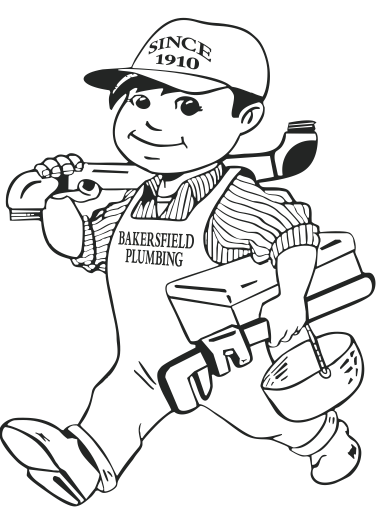Plumbing, a cornerstone of modern civilization, has an intriguing history that dates back thousands of years. This essential system, which we often take for granted, has evolved dramatically, reflecting the ingenuity and progress of human societies. In this blog post, we’ll delve into the rich history of plumbing, tracing its origins and highlighting the key developments that have shaped the plumbing systems we rely on today.
Ancient Egypt
The story of plumbing begins in ancient Egypt, around 2500 BCE, where the early Egyptians devised one of the first known plumbing systems. They constructed elaborate irrigation systems to control the Nile River’s floodwaters, which included channels and basins for water distribution. Additionally, Egyptians used copper pipes to build sophisticated bathrooms in their homes and palaces, complete with lavatories and drainage systems.
Indus Valley Civilization
Around the same period, the Indus Valley Civilization (modern-day Pakistan and northwest India) showcased remarkable advancements in urban planning and sanitation. Cities like Mohenjo-Daro and Harappa had well-organized layouts with public baths, private toilets, and an extensive network of drains. These early systems highlight the civilization’s commitment to hygiene and public health.
Aqueducts and Lead Pipes
The Romans are renowned for their engineering prowess, and their contributions to plumbing were no exception. They perfected the construction of aqueducts, which transported fresh water from distant sources into cities and towns. These aqueducts, built from stone and concrete, were marvels of engineering, ensuring a continuous supply of clean water.
Romans also used lead pipes, known as fistulae, for plumbing inside buildings. These pipes distributed water to public baths, fountains, and private homes. Despite the health risks associated with lead, these innovations significantly improved the quality of life in Roman cities.
Public Baths and Sewers
Public baths were a central feature of Roman society, serving as social hubs and hygiene facilities. The most famous example, the Baths of Caracalla, could accommodate thousands of bathers daily, featuring heated pools, steam rooms, and intricate plumbing systems.
The Romans also developed extensive sewer systems, like the Cloaca Maxima in Rome, one of the world’s earliest sewage systems. This massive structure drained waste from the city into the Tiber River, showcasing the Romans’ advanced understanding of sanitation and urban planning.
Medieval Advancements
During the medieval period, plumbing regressed somewhat due to the decline of the Roman Empire. However, some innovations persisted. Monasteries and castles often had rudimentary plumbing systems, including gutters and rudimentary toilets known as garderobes, which were built into the walls and emptied into moats or cesspits.
The Renaissance
The Renaissance brought renewed interest in science and engineering, leading to significant plumbing advancements. Leonardo da Vinci and other thinkers of the era conceptualized improved water supply systems and devices for lifting and transporting water. By the late Renaissance, European cities began developing more sophisticated sewer systems and public water supplies, laying the groundwork for modern plumbing.
19th Century Breakthroughs
The 19th century marked a pivotal era for plumbing. The Industrial Revolution spurred urbanization, necessitating better sanitation infrastructure. Innovations such as cast iron pipes, water treatment plants, and the development of flush toilets revolutionized urban living.
The Advent of Indoor Plumbing
By the late 1800s, indoor plumbing became increasingly common in Western homes. Advances in pipe materials, such as galvanized steel and later copper, improved durability and safety. Thomas Crapper, often mistakenly credited with inventing the flush toilet, significantly improved its design and popularized its use in England.
Technological Advancements
The 20th and 21st centuries have seen remarkable technological advancements in plumbing. From the introduction of PVC and PEX pipes to smart plumbing systems, modern plumbing has become more efficient, sustainable, and user-friendly. Innovations like tankless water heaters, water-saving fixtures, and smart leak detection systems have transformed residential and commercial plumbing.
Sustainability and Green Plumbing
Today, there is a growing emphasis on sustainability in plumbing. Green plumbing practices, such as using low-flow fixtures, rainwater harvesting systems, and greywater recycling, aim to conserve water and reduce environmental impact. As we look to the future, the plumbing industry continues to evolve, embracing new technologies and sustainable practices to meet the challenges of a growing and changing world.
The history of plumbing is a testament to human ingenuity and the relentless pursuit of progress. From the ancient Egyptians and Romans to modern-day innovations, plumbing has continually evolved to meet the needs of societies. As we continue to innovate and improve, the future of plumbing promises to be as dynamic and essential as its storied past.
Stay tuned to our blog for more insights and updates on the latest in plumbing technology, tips for maintaining your home’s plumbing system, and much more. For all your plumbing needs, trust our expert team to provide reliable and efficient solutions.

Address:
4625 District Boulevard
Phone:
(661) 397-2093